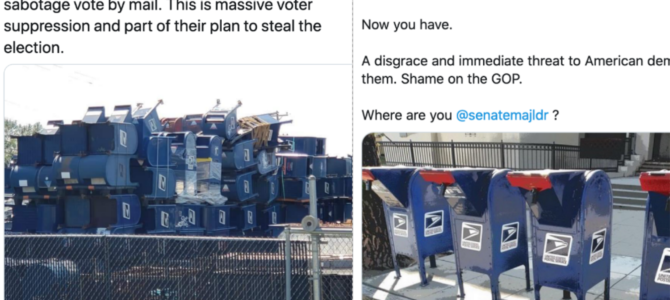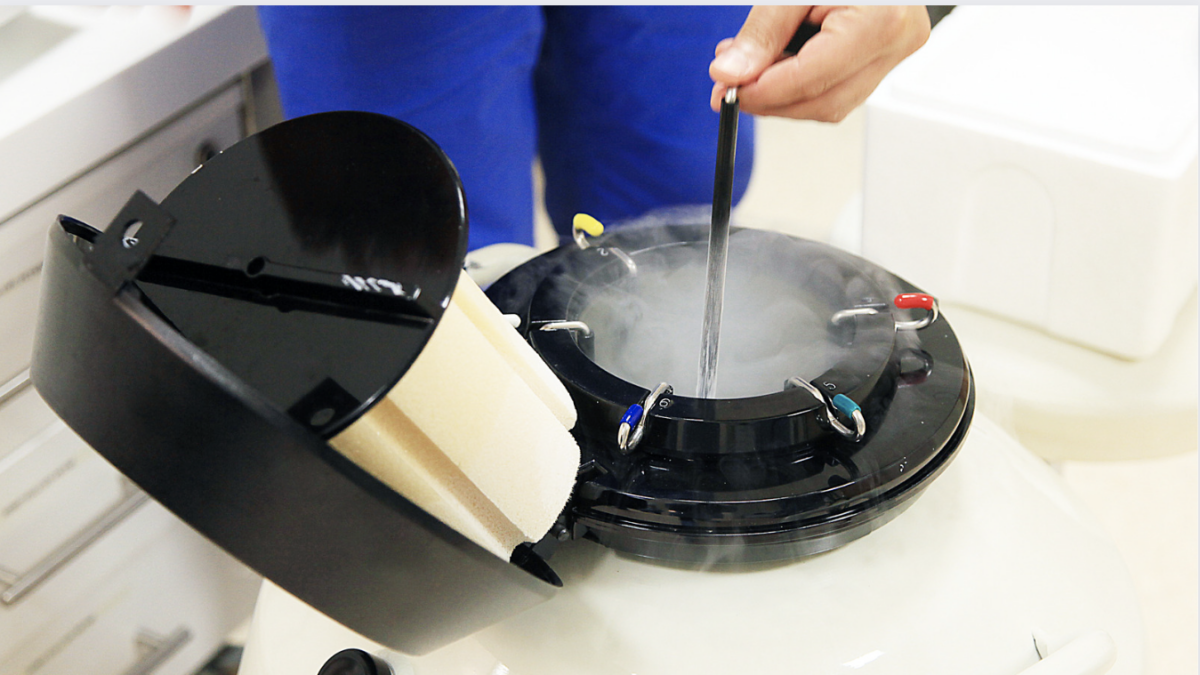
Twitter said Wednesday it would refuse to censor or give a misinformation label to a series of viral tweets perpetuating conspiracy theories about President Donald Trump trying to steal the election by cutting access to the United States Postal Service (USPS).
The tweets, Twitter told National Review, did not violate the platform’s updated civic integrity policy, which the company used to fact-check Trump for the first time in May on a pair of posts raising valid concerns over nationwide mail-in voting.
The series of online conspiracies featuring locked mailboxes circulating the website accuse Trump of manipulating the Postal Service to ensure re-election. They went viral following the president’s explanation last week to refuse additional funding for the financially strained agency. Trump said his opposition to more spending on the nation’s mail service was so states “can’t have universal mail-in voting” to conduct their elections when only few states already possess the proper infrastructure to protect the integrity of the ballot box.
Several widely debunked posts accusing Trump of manipulating the postal service then began flourishing on Twitter, even drawing the endorsement from high-profile Democrats.
One post that garnered more than 25,000 retweets shows locked mailboxes and another featuring piled up mailboxes has more than 82,000.
https://twitter.com/RexChapman/status/1295153823078592512?s=20
Photo taken in Wisconsin. This is happening right before our eyes. They are sabotaging USPS to sabotage vote by mail. This is massive voter suppression and part of their plan to steal the election. pic.twitter.com/QXLWGIHTrz
— Thomas Kennedy (@tomaskenn) August 15, 2020
“This is what a coup looks like,” observed the former director government ethics under President Obama Walter Shaub, while the top Democratic impeachment aide Daniel Goldman, who literally executed a coup attempt over a phone call dubbed Trump’s supposed attempts to hijack the election through the Post Office “the most anti-democratic thing [Trump] has done.” Each tweet racked up thousands of additional retweets.
The tweets however, perpetuating an already widely discredited conspiracy, have themselves been debunked on the platform by other users without nearly the same the level attention. This leads many users to still believe Trump is orchestrating his own deep-state operation to secure a second term.
“I just drove there,” one Twitter user wrote in response to the locked mailboxes showing that people can still deposit mail on the opposite side. “Here is where people can mail their letters a the Burbank P.O.. They lock the other side and the lobby is locked when the Post Office is closed.”
Here is where people can mail their letters at the Burbank P.O.. They lock the other side and the lobby is locked when the Post Office is closed. It’s very dangerous to post misinformation. It panics people, especially during this scary era. pic.twitter.com/aYPlJqzEP0
— haunted dog (@zandywithaz) August 17, 2020
According to the Los Angeles News in 2016, the local post office began modifying the boxes with locks to keep out thieves.
Another user pointed out that the piled up mailboxes in Wisconsin pictured in another viral post had already been there for years.
“Hartford Finishing Inc.,” Photojournalist Gary He explains, works under a government contract that “powder coats and refurbishes the old mailboxes.”
https://twitter.com/garyhe/status/1295360446795583491?s=20
Twitter maintained to National Review however, that despite the online corrections receiving far less exposure on the site than the viral misinformation, the initial tweets did not stand in violation of the company’s rules prohibiting “misleading information relating to votes not being counted.” Still, the platform pointed to the same rules to justify its censorship of Trump several months ago that shed light on the risks of universal mail-in voting implemented by states with no experience with the practice less so close to the election.
“There is NO WAY (ZERO!) that Mail-In Ballots will be anything less than substantially fraudulent. Mail boxes will be robbed, ballots will be forged & even illegally printed out & fraudulently signed,” Trump warned.
“Get the facts about mail-in ballots,” Twitter tagged onto each post.

Trump’s claims however, were not unwarranted.
“Error and Fraud at Issue as Absentee Voting Rises,” the New York Times headlined a 2012 article outlining potential pitfalls of mail-in voting.
“There is a bipartisan consensus that voting by mail, whatever its impact, is more easily abused than other forms,” the Times wrote. “Votes cast by mail are less likely to be counted, more likely to be compromised and more likely to be contested than those cast in a voting booth, statistics show. Election officials reject almost 2 percent of ballots cast by mail, double the rate for in-person voting.”
While the New York Times piece was eight years ago, recent events just this year have provided no more optimism for the sanctity of mail-in voting.
In New York City, it took election officials six weeks to declare the winners of two congressional primaries where more than 12,000 ballots were disqualified, according to the Times. Incumbent Democratic Rep. Carolyn Maloney however, led by only 3,700 votes when the race was called.
In Florida, the Washington Post reported more than 18,500 ballots went uncounted in its March primary. In Nevada, about 6,700 were declared invalid when officials were unable to verify signatures. In Pennsylvania, the courts tossed out “tens of thousands” of ballots for apparently coming in late.
In New Jersey last month, thousands of voters were told they would not get their ballots until after the July 7 primary day because of computer problems.
“We are not capable of running this election in the time allotted,” one county official told the New Jersey Globe, casting doubt over the state’s ability to run a successful contest in November.









